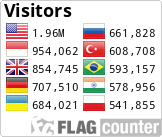Strategic Financial Management: Unraveling the Dynamics of Sustainable Business Growth at SMEs Enterprises in Indonesia
DOI:
https://doi.org/10.59613/global.v2i1.74Keywords:
Strategic Financial Management 2. Sustainable Business Growth 3. Small and Medium-sized Enterprises (SMEs) IndonesiaAbstract
This article delves into the dynamics of sustainable business growth at Small and Medium-sized Enterprises (SMEs) in Indonesia through the lens of strategic financial management. Employing a qualitative methodology, the study conducts a thorough literature review and library research to unravel key insights into the financial strategies adopted by SMEs for achieving sustainability in a dynamic business environment.
The research explores various dimensions of strategic financial management, including capital structure, financial risk management, and investment decisions, within the context of SMEs in Indonesia. By synthesizing existing literature, the article aims to provide a comprehensive understanding of how SMEs navigate financial challenges and capitalize on opportunities to foster sustainable growth.
The findings highlight the significance of tailored financial strategies for SMEs, emphasizing the need for agility and adaptability in response to market fluctuations and regulatory changes. The article discusses successful case studies and identifies common challenges faced by SMEs in Indonesia, shedding light on effective financial management practices that contribute to long-term viability.
Downloads
Published
How to Cite
Issue
Section
License
Copyright (c) 2024 D.Iwan Riswandi, Nurmawati Mambuhu, Vira Tandiawan, Udin Saepudin, Qorri Aina

This work is licensed under a Creative Commons Attribution 4.0 International License.














